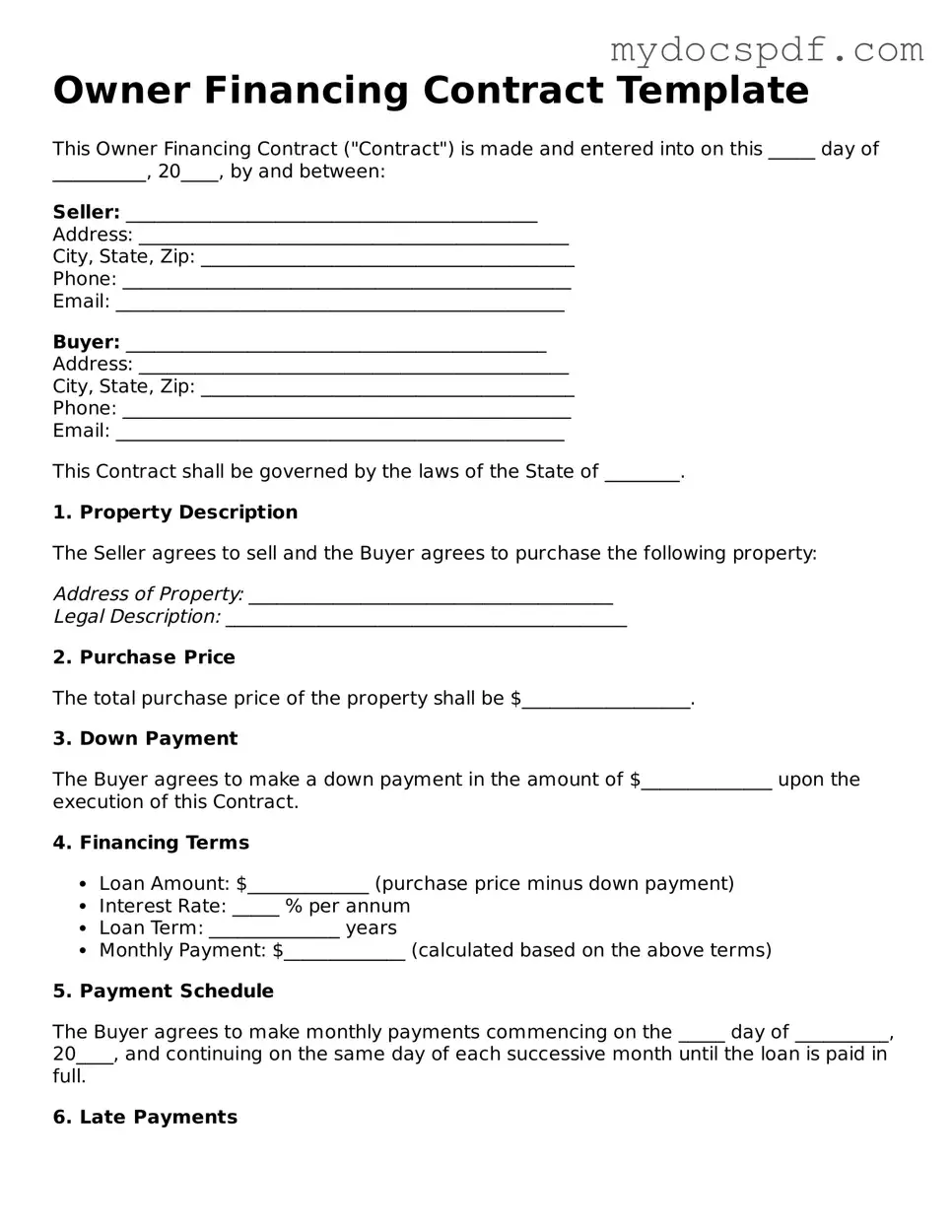Owner Financing Contract Template
This Owner Financing Contract ("Contract") is made and entered into on this _____ day of __________, 20____, by and between:
Seller: ____________________________________________
Address: ______________________________________________
City, State, Zip: ________________________________________
Phone: ________________________________________________
Email: ________________________________________________
Buyer: _____________________________________________
Address: ______________________________________________
City, State, Zip: ________________________________________
Phone: ________________________________________________
Email: ________________________________________________
This Contract shall be governed by the laws of the State of ________.
1. Property Description
The Seller agrees to sell and the Buyer agrees to purchase the following property:
Address of Property: _______________________________________
Legal Description: ___________________________________________
2. Purchase Price
The total purchase price of the property shall be $__________________.
3. Down Payment
The Buyer agrees to make a down payment in the amount of $______________ upon the execution of this Contract.
4. Financing Terms
- Loan Amount: $_____________ (purchase price minus down payment)
- Interest Rate: _____ % per annum
- Loan Term: ______________ years
- Monthly Payment: $_____________ (calculated based on the above terms)
5. Payment Schedule
The Buyer agrees to make monthly payments commencing on the _____ day of __________, 20____, and continuing on the same day of each successive month until the loan is paid in full.
6. Late Payments
If any monthly payment is not received within _____ days of its due date, a late fee of $_____________ shall be assessed.
7. Prepayment
The Buyer may prepay the principal balance of this Contract, in whole or in part, without penalty.
8. Default
In the event of default by the Buyer, the Seller may pursue remedies allowed by law, including but not limited to, foreclosure on the property.
9. Transfer of Title
The Seller agrees to convey the title of the property to the Buyer upon receipt of the final payment and after all terms of this Contract are fulfilled.
10. Governing Law
This Contract shall be controlled by and construed in accordance with the laws of the State of ________.
11. Entire Agreement
This document constitutes the entire agreement between the parties and supersedes any prior understanding or agreements, written or oral. Any amendments must be in writing and signed by both parties.
IN WITNESS WHEREOF, the parties have executed this Owner Financing Contract as of the date first above written.
Seller's Signature: _________________________ Date: ____________
Buyer's Signature: _________________________ Date: ____________
